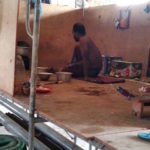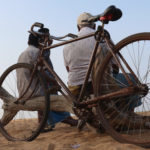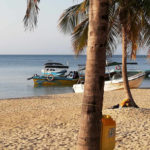A relic from colonial times
The pied á terre for the first Governor of Ceylon was once one of Sri Lanka’s most celebrated buildings.
The Doric bungalow, built on the Arippu coastal area near Silawathurai and the Gulf of Kondachchi, located in the northwestern coast of Mannar, is one of the most celebrated architectural works in Sri Lanka.
Between 1801 and 1804, Frederick North, the first Governor of Ceylon, visited the Arippu beach twice a year to collect taxes from those engaged in the pearl industry, as well as to look into the area’s development. The coasts of Arippu and Kondachchi in the Gulf of Mannar were well known for pearl diving. Governor Frederic North took great personal interest in the industry because it yielded high income for the white rulers like himself.
The visiting Governor had been unable to stay in Arippu for several days due to the lack of a permanent residence. So a bungalow was built at the highest point of the Arippu coast as his official residence and is still called Doric bungalow. In Mannar region it is most commonly known as ‘Alli Rani Koattai’ and Dona Katarina Fort.
On the 18th of March 1802, the foundation stone for the construction of the Doric Bungalow was laid and completed within two years. The Portuguese, the Dutch and the British periodically joined in the construction. Although Frederic North was an Englishman, the reason why he used Greek builders is still unknown. The meaning of Doric in the Greek language is “strong,” according to ancient tradition.
The bungalow is a two-story building with four bedrooms on the ground floor and a large portico in the upper floor for viewing the activities of the sea. A stairway of bricks and cement plaster leads the upper chambers. The house was built using well-burnt red-colored bricks on strong columns and plastered with a mixture of seashells. By the 1970s, although the front of the Doric bungalow appears to remain intact, most of this historical house was destroyed due to extreme sea erosion and wind.
Today the Coast Conservation Department has constructed a breakwater of about 40 meters in height, using the Archaeological Fund for the protection of the remaining part of Doric bungalow to keep it from further destruction and to preserve it for future generations.










